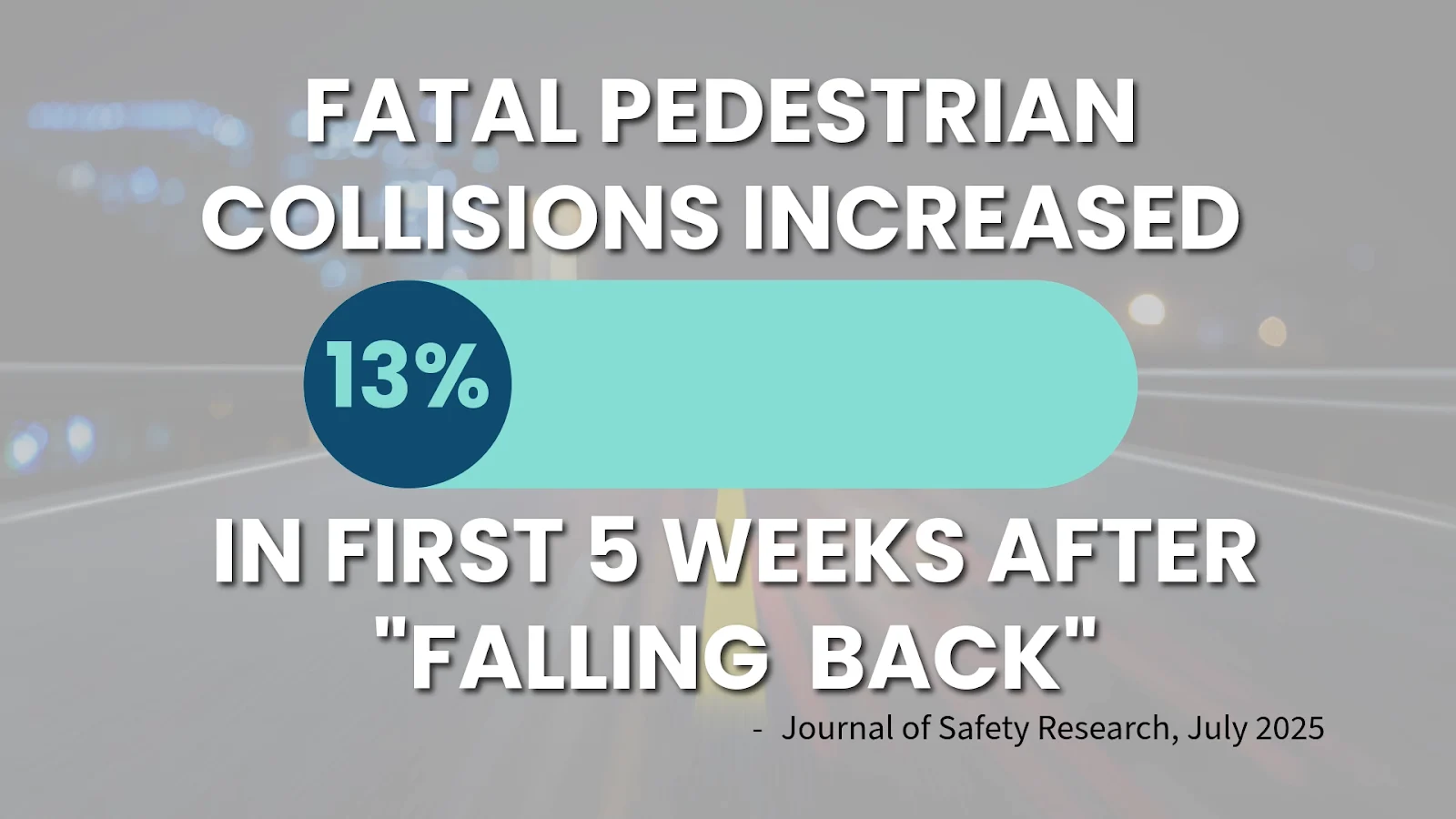
This city is on track to see record road deaths as DST ends Sunday
As Sunday's time change brings darker commutes, an Alberta city is on pace to see a record number of road deaths this year.
Daylight saving time is about to end, and that means a sudden shift to a darker rush hour commute.
It’s easy to imagine how this translates to more risk on the roadways in the evenings as vulnerable users like pedestrians and cyclists suddenly become harder to see. That’s an idea backed by evidence, too.
A July 2025 study. published in the Journal of Safety Research investigated fatal crashes in the United States in the five weeks before and after daylight saving time. It found fatal pedestrian and cyclist crashes increased 13 per cent after the fall change, with “light condition” listed as a “key determinant” of the impact time changes have on serious accidents.
SEE ALSO: Setting clocks back one hour may come with negative health drawbacks

This study also found that the switch back to daylight saving time in the spring was associated with a reduction in fatal pedestrian collisions. It concluded that improved infrastructure and vehicle technology are needed to compensate for the sudden change in ambient light conditions associated with the biannual change. (The Weather Network)
Other studies have tied darkness to risk and cost on the road as well.
With winter months ushering in a period of shorter daylight hours in general, it’s important to remain aware of the coming time change, adjust driving behaviours to become more aware of intersections, crosswalks, and bike lanes, as well as obey the speed limit, stay off your phone, and ensure your brakes and headlights are in working order.
Recent collision trends are a concern for the City of Calgary
While many communities will be encouraging safe driving practices as we transition into winter, the need for risk awareness is especially important in Calgary.

Calgary has already seen 11 fatal pedestrian collisions on its roadways so far this year. The record for pedestrian deaths (since collision record keeping began in 1996) in a calendar year was 14 in 2005. (The Weather Network)
The city is on track to see a record number of pedestrian deaths in 2025. The deadliest year on record for Calgary’s pedestrians came in 2005, when 14 fatal collisions were registered.
As of October 29, the Calgary Police Service (CPS) reports 11 such incidents so far this year, including three in less than 24 hours earlier in October.
They also report that “in 2024, most fatal collisions occurred in the final quarter of the year. And of the 13 fatal pedestrian collisions in 2024, nearly half occurred during evening or nighttime hours.”

According to Calgary Police Service, there have been 19 fatal collisions involving “vulnerable road users” in 2025, including 11 pedestrian collisions. In total, there have been 30 fatal collisions on Calgary roads. Three of them were hit and runs. (The Weather Network)
This trend alarms the City of Calgary Mobility Safety Lead Joanna Domarad.
“Unfortunately, we are seeing an increase in fatalities on our roadways, so we are working closely to do everything we can to focus on improving our streets through engineering measures,” says Domarad.
“We're also working with our partners at Calgary Police Service on enforcement and education strategies to educate people and let them know what behaviours are dangerous.”
DON'T MISS: Why do we 'fall back'?: The story of daylight saving time

The city of Calgary’s traffic management centre is used to monitor roadways, manage incidents and inform navigation services like Waze. (Connor O'Donovan/The Weather Network)
Calgary has a plan in place to reduce collisions
Launched in 2024, the city of Calgary’s safer mobility plan, developed in partnership with CPS, seeks to achieve a 25 per cent reduction in fatal and serious injury collisions over five years.
“Fall is a time where we do see increased numbers of pedestrian collisions. And this is due to many reasons that include the increased hours of darkness,” Domarad says.
“We are looking at ways that we could share that information and ask drivers to be more diligent about paying attention to where pedestrians can be, such as intersections and crosswalks, and driving at a safe speed.”

Wearing bright, reflective clothing at night can go a long way towards ensuring safe journeys. (Connor O'Donovan/The Weather Network)
Domarad adds the city regularly conducts lighting reviews at crosswalks and intersections, and is also working to incorporate traffic calming measures like speed bumps and curb extensions as part of efforts to hit the mobility plan target.
She reminds pedestrians and cyclists that they too share the responsibility of using roadways and sidewalks safely, including by remaining undistracted and using designated crosswalks to cross streets.
“We want to make sure that our drivers and pedestrians understand that the effect of these collisions is community-wide, and the deaths impact families, and to make sure that they keep themselves and their community safe as they're moving around their roadways.”
